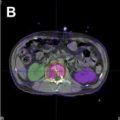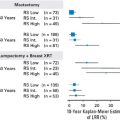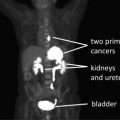Historically, squamous cell carcinoma of the anal canal was treated with abdominoperineal resection. Nigro discovered that radiation therapy combined with 5-fluorouracil and mitomycin resulted in high rates of local control and colostomy-free and overall survival without surgical intervention. Recent advances include the integration of PET into staging, radiation treatment planning, disease monitoring, and the use of intensity-modulated radiation therapy. For rectal cancer, clinical trials have established the role for neoadjuvant therapy for T3-4 and/or node-positive tumor presentations. Chemotherapy and targeted agents are under study in both anal and rectal cancers to improve on the standard combinations of chemotherapy and radiation.
Key points
- •
The standard therapy for squamous cell carcinoma of the anal canal consists of chemoradiotherapy using mitomycin and 5-fluorouracil. Recent advances consist of the integration of PET scanning into staging and treatment and the use of intensity-modulated radiation therapy. Study is ongoing on novel systemic agents with radiation therapy.
- •
Stage II and III rectal cancer is primarily approached using neoadjuvant radiation therapy. Radiation options include long-course chemoradiotherapy and short-course radiation therapy alone.
- •
The integration of novel systemic agents in conjunction with radiation therapy in the preoperative setting of rectal cancer remains a subject of investigation. To date, no agents beyond fluoropyrimidines have shown a definite advantage when combined with radiation therapy in rectal cancer patients.
Stay updated, free articles. Join our Telegram channel

Full access? Get Clinical Tree







